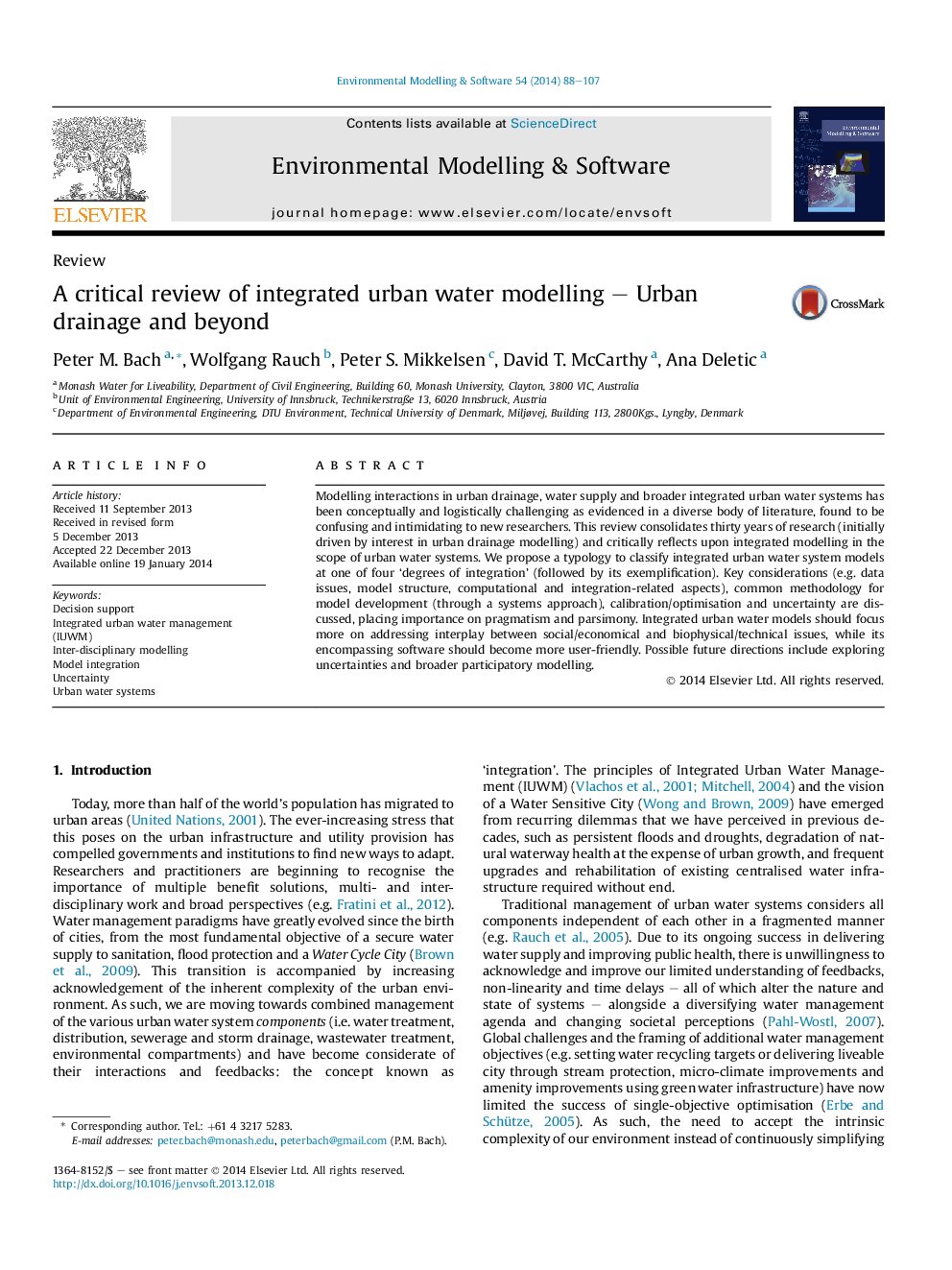| Article ID | Journal | Published Year | Pages | File Type |
|---|---|---|---|---|
| 568870 | Environmental Modelling & Software | 2014 | 20 Pages |
•‘Integration’ is ambiguous, a typology of ‘degrees of integration’ is proposed.•Integrated modelling lies between completeness and parsimony guided by pragmatism.•Data collection and model calibration/validation remain crucial challenges in integrated modelling.•Uptake of integrated models in practice remains slow, but it has improved.•Future role of integrated models: exploring uncertainty and participatory modelling.
Modelling interactions in urban drainage, water supply and broader integrated urban water systems has been conceptually and logistically challenging as evidenced in a diverse body of literature, found to be confusing and intimidating to new researchers. This review consolidates thirty years of research (initially driven by interest in urban drainage modelling) and critically reflects upon integrated modelling in the scope of urban water systems. We propose a typology to classify integrated urban water system models at one of four ‘degrees of integration’ (followed by its exemplification). Key considerations (e.g. data issues, model structure, computational and integration-related aspects), common methodology for model development (through a systems approach), calibration/optimisation and uncertainty are discussed, placing importance on pragmatism and parsimony. Integrated urban water models should focus more on addressing interplay between social/economical and biophysical/technical issues, while its encompassing software should become more user-friendly. Possible future directions include exploring uncertainties and broader participatory modelling.
